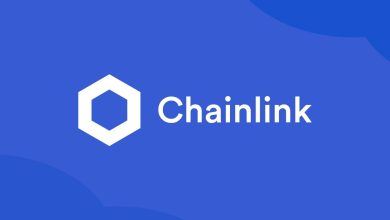Aave (AAVE): The Decentralized Lending Protocol

- Understanding Aave: A Deep Dive into the Decentralized Lending Protocol
- The Evolution of Aave: From Concept to Leading DeFi Platform
- How Aave Works: Exploring the Mechanics of Decentralized Lending
- The Benefits of Aave: Why Users are Flocking to this DeFi Protocol
- Aave vs. Traditional Lending: A Comparison of the Two Systems
- The Future of Aave: What’s Next for the Decentralized Lending Protocol
Understanding Aave: A Deep Dive into the Decentralized Lending Protocol
Aave is a decentralized lending protocol that allows users to lend and borrow a variety of cryptocurrencies without the need for a traditional financial intermediary. This innovative platform operates on the Ethereum blockchain, utilizing smart contracts to automate the lending process and ensure security and transparency for all participants.
One of the key features of Aave is its use of a unique system called “flash loans,” which allow users to borrow funds without the need for collateral as long as the loan is repaid within the same transaction. This feature has opened up new possibilities for arbitrage and other trading strategies in the decentralized finance (DeFi) space.
In addition to flash loans, Aave offers a wide range of other lending and borrowing options, including variable and stable interest rates, collateral swapping, and the ability to earn interest on deposited assets. This flexibility makes Aave a popular choice for both individual users and institutional investors looking to access liquidity in the rapidly growing DeFi market.
Overall, Aave’s decentralized lending protocol has quickly become a cornerstone of the DeFi ecosystem, providing users with a secure and efficient way to access and manage their digital assets. With its innovative features and commitment to decentralization, Aave is poised to continue leading the way in the evolution of decentralized finance.
The Evolution of Aave: From Concept to Leading DeFi Platform
The evolution of Aave has been a remarkable journey, starting as a simple concept and growing into one of the leading DeFi platforms in the cryptocurrency space. Aave has revolutionized the way people interact with decentralized lending protocols, offering users a secure and efficient way to borrow and lend digital assets without the need for traditional financial intermediaries.
From its inception, Aave has focused on innovation and user experience, constantly pushing the boundaries of what is possible in the DeFi ecosystem. The platform’s native token, AAVE, plays a crucial role in governance and incentivizing participation, creating a vibrant community of users who are actively involved in shaping the future of the protocol.
Aave’s success can be attributed to its commitment to security and transparency, as well as its ability to adapt to the ever-changing landscape of decentralized finance. By constantly iterating on its technology and listening to the feedback of its users, Aave has been able to stay ahead of the curve and maintain its position as a leader in the DeFi space.
As Aave continues to grow and evolve, it is clear that the platform will play an increasingly important role in shaping the future of finance. With its innovative approach to lending and borrowing, Aave is poised to revolutionize the way people access and manage their digital assets, providing a decentralized alternative to traditional financial services.
How Aave Works: Exploring the Mechanics of Decentralized Lending
Aave operates as a decentralized lending protocol that allows users to lend and borrow a variety of cryptocurrencies without the need for traditional financial intermediaries. The mechanics of Aave are based on smart contracts, which are self-executing contracts with the terms of the agreement directly written into code. This eliminates the need for a middleman and ensures that transactions are secure and transparent.
When a user wants to lend their cryptocurrency on Aave, they deposit it into a liquidity pool. In return, they receive aTokens, which represent their share of the pool. These aTokens accrue interest over time, allowing users to earn passive income on their holdings. On the other hand, borrowers can use their cryptocurrency as collateral to take out a loan in a different asset. The amount they can borrow is determined by the value of their collateral and the loan-to-value ratio set by the protocol.
One of the key features of Aave is its use of flash loans, which are uncollateralized loans that must be repaid within the same transaction. This allows users to access liquidity without having to put up any collateral, making it a powerful tool for arbitrage and other trading strategies. Additionally, Aave employs a unique interest rate model that is based on supply and demand, ensuring that rates are competitive and efficient.
The Benefits of Aave: Why Users are Flocking to this DeFi Protocol
The benefits of Aave are numerous, which is why users are increasingly turning to this DeFi protocol for their lending needs. One of the main advantages of Aave is its decentralized nature, which means that users have full control over their funds without the need for intermediaries. This not only provides greater security but also eliminates the risk of censorship or downtime.
Another key benefit of Aave is its wide range of supported assets, allowing users to lend and borrow various cryptocurrencies. This flexibility enables users to diversify their portfolios and take advantage of different investment opportunities. Additionally, Aave’s innovative flash loans feature allows users to borrow funds without collateral, opening up new possibilities for arbitrage and other trading strategies.
Furthermore, Aave’s integration with other DeFi protocols and platforms enhances its usability and liquidity. Users can easily move their assets between different platforms, maximizing their returns and minimizing transaction costs. This interoperability also contributes to Aave’s growing popularity within the DeFi ecosystem.
In conclusion, Aave offers a compelling combination of decentralization, asset variety, innovative features, and interoperability, making it a top choice for users seeking to participate in decentralized lending. As the DeFi space continues to evolve, Aave is well-positioned to remain a key player in the industry, attracting more users looking to leverage the benefits of this innovative protocol.
Aave vs. Traditional Lending: A Comparison of the Two Systems
When comparing Aave to traditional lending systems, it is important to consider the key differences between the two. Aave operates on a decentralized platform, allowing users to borrow and lend assets without the need for intermediaries such as banks. This eliminates the need for trust in a central authority, as transactions are executed through smart contracts on the blockchain.
Traditional lending, on the other hand, relies on centralized institutions to facilitate borrowing and lending. This often involves lengthy approval processes, credit checks, and high-interest rates. Additionally, traditional lending systems are subject to regulatory oversight, which can limit access to financial services for certain individuals.
One of the main advantages of Aave is its ability to offer users a wide range of assets to borrow and lend, including cryptocurrencies and tokens. This provides users with more flexibility and opportunities to diversify their portfolios. In contrast, traditional lending systems typically offer a more limited selection of assets, which can restrict investment options.
Furthermore, Aave’s decentralized nature means that users have greater control over their funds and can access them at any time without restrictions. This level of autonomy is not typically available in traditional lending systems, where funds may be subject to withdrawal limits or other restrictions imposed by the lending institution.
In conclusion, while traditional lending systems have their advantages, Aave offers a more decentralized, flexible, and accessible alternative for individuals looking to borrow or lend assets. By leveraging blockchain technology and smart contracts, Aave is able to provide users with a more efficient and transparent lending experience compared to traditional systems.
The Future of Aave: What’s Next for the Decentralized Lending Protocol
The future of Aave looks promising as the decentralized lending protocol continues to innovate and expand its offerings. With a strong focus on user experience and security, Aave is set to revolutionize the way people interact with decentralized finance. One of the key developments on the horizon for Aave is the implementation of layer 2 scaling solutions, which will help reduce transaction costs and improve overall efficiency.
Additionally, Aave is exploring new partnerships and collaborations to further enhance its ecosystem. By working with other projects in the decentralized finance space, Aave can offer users a wider range of services and opportunities. This collaborative approach is expected to drive growth and adoption of the protocol in the coming months.
Furthermore, Aave is constantly working on improving its governance model to ensure that the community has a say in the direction of the protocol. By giving users a voice in decision-making processes, Aave can become more decentralized and resilient to external influences. This commitment to decentralization is a core principle of the protocol and will continue to guide its development in the future.



